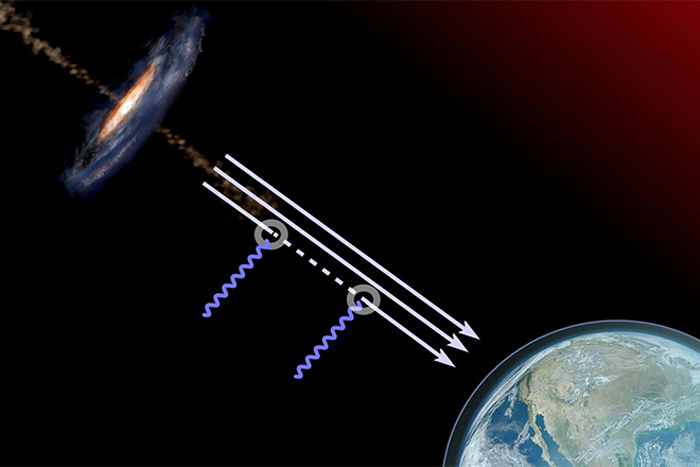'Axion-like Particles' Probably Not a Dark Matter Answer

Astronomers are highly aware that the vast majority of matter in our universe is invisible, or "dark." So what the heck is it? Well, now we have a good idea as to what it probably isn't.
After analyzing a large number of observations recorded by NASA's Fermi space telescope, researchers have found a type of hypothetical dark matter particles, known as axion-like particles, either aren't a major player in the dark matter game, or simply don't exist.
ANALYSIS: Dark Matter Dwarf Galaxy Found Hidden in Spacetime Warp
Axion-like particles are thought to be created by certain quantum interactions, but they have a strange quality that could be measured if they pass through strong magnetic fields. Although these particles are thought to be extremely light — "weighing in" at less than a billionth of the mass of an electron — the universe could be flooded with them, creating a huge gravitational bulk that could explain where most of the mass of the universe is hidden.
But axion-like particles, or "ALPs," may give themselves away in a very subtle way. Under certain conditions, otherwise "invisible" ALPs may transform into photons, the particles responsible for the transmission of light. So we may not be able to directly see these dark matter particles (as dark matter does not interact via the electromagnetic force), but we can certainly see photons (which are the exchange particles of the electromagnetic force).
NEWS: Dark Matter Particle Could be Size of Human Cell
To test this idea, physicists have analyzed gamma-ray emissions from a very bright galaxy called NGC 1275 in the Perseus galaxy cluster, some 240 million light-years away. Between us and that galaxy, there are some powerful magnetic environments any photon, or indeed dark matter particle, would need to travel through. So if a certain type of ALP does exist, their fluctuation from dark matter particle to gamma-ray photon — and vice versa — should be detected. However, no such oscillation has, so far, been found in 6-years-worth of gamma-ray observations by Fermi.
Get the Space.com Newsletter
Breaking space news, the latest updates on rocket launches, skywatching events and more!
"The ALPs we have been able to exclude could explain a certain amount of dark matter," said Manuel Meyer, post doctorate researcher at the Department of Physics, Stockholm University. "What is particularly interesting is that with our analysis we are reaching a sensitivity that we thought could only be obtained with dedicated future experiments on Earth."
ANALYSIS: Is Earth Growing a Hairy Dark Matter 'Beard?'
The researchers hope to gather more data from Fermi, but it looks like either these types of ALPs don't act in the way we expect or they don't exist, likely canceling them out of the search for dark matter.
Source: Stockholm University
Originally published on Discovery News.
Join our Space Forums to keep talking space on the latest missions, night sky and more! And if you have a news tip, correction or comment, let us know at: community@space.com.
Ian O'Neill is a media relations specialist at NASA's Jet Propulsion Laboratory (JPL) in Southern California. Prior to joining JPL, he served as editor for the Astronomical Society of the Pacific‘s Mercury magazine and Mercury Online and contributed articles to a number of other publications, including Space.com, Space.com, Live Science, HISTORY.com, Scientific American. Ian holds a Ph.D in solar physics and a master's degree in planetary and space physics.
